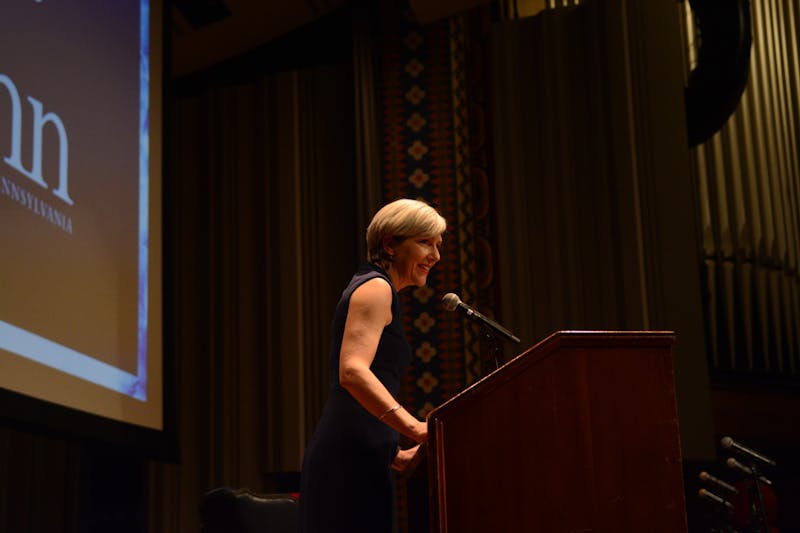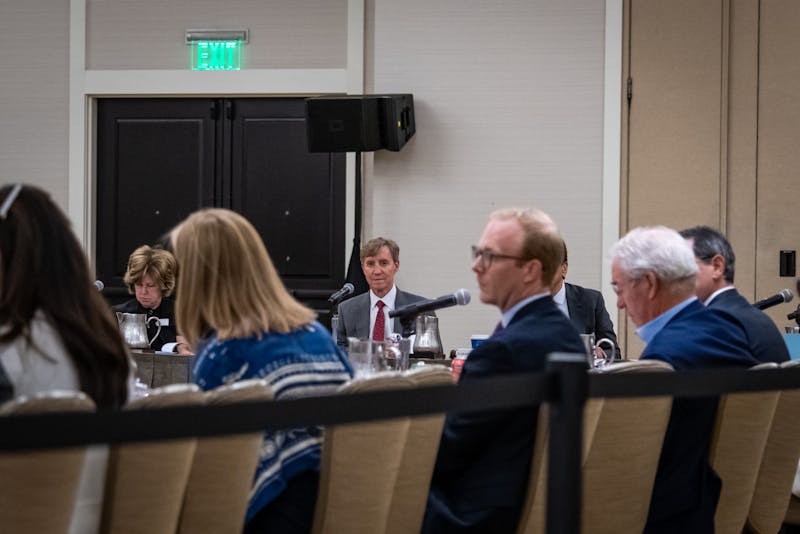As voters rushed to the polls on Nov. 4 to cast their mayoral votes, the only real-time information about voter turnout was generated by a group of students from Penn.
Students from the Fels Institute of Government joined forces with PoliticsPA, a Web site that provides information about state government issues and elections, WPHT 1210 AM and KYW-TV Channel 3 to track and report voter turnout for the mayoral election in real time.
Although the data has yet to be fully analyzed -- a process that will be carried out over the course of several months -- preliminary information has been released about which districts showed the greatest deviations in voter participation and which performed at an expected level.
"It is an excellent set of data to work with. It's easy to model from that data who voted, when people voted and how that compared to previous elections," said Christopher Patusky, Fels chief operating officer and the project manager of "ElectionWatch 2003."
Of the 55 polling locations tracked by the Fels Center students, 11 had a voter turnout more than 120 percent above the projected rate, and eight had under 92 percent of the expected voter turnout. Only 16 had voter turnouts below the expected rate.
The locations exhibiting the highest voter turnout were fairly evenly distributed across the political spectrum.
Among the 11 areas with unexpectedly high voter turnout, seven are predominantly Democratic, two are predominantly Republican, while the last two are considered swing votes, with fairly even numbers of registered Republicans and Democrats.
Of the eight polling sites with the lower-than-expected voter turnout, six are considered Republican areas, while only two are generally Democratic.
The voting locations surveyed were geographically spread throughout the city, encompassing Center City, North, West and South Philadelphia, as well as Manayunk and University City.
Approximately 50 student volunteers spent Election Day traveling throughout the city, reporting voter turnout data every two hours through a voice-recognition system devised by Voterlink Data Systems, a company based in Bala Cynwyd, Pa.
While radio and television broadcasters assessed the data on air as it came into the Palm Restaurant, where the radio crew was stationed throughout the day, the analysis process will proceed over the next few months. It will mainly be reviewed by Fels students and professors over the coming months, Patusky said.
The project to track voter turnout was an intricate endeavor. Some volunteers -- who included mainly Penn students, as well as a few from other area universities -- called in to report their data to interactive voice recorders six times throughout the day. Others were "embedded" at various polling facilities, calling in any problems that occurred throughout the day, such as long lines, broken machines and cases of voters being turned away, Patusky said.
However, despite minor problems, "the field operation worked beautifully," Patusky added.
The students did face some hostility from poll workers who did not allow them to enter, and in one case, "rovers had to drive over with poll certificates," Patusky said.
Andrew Davenport, a second-year Fels student, said that some poll volunteers were hostile to the students because they assumed that they were representing one of the mayoral candidates. However, he said that "once you got past those images, people were very receptive."
"Some people ran into some serious shenanigans, but I wasn't one of them," Davenport added.
Davenport, who tracked three voting locations throughout the day, said that the project was "a fantastic opportunity."
"It certainly engages you in the election," he said, adding that "I certainly felt involved as a student of government."
"One of my sites just had really heavy turnout compared to previous years, which they weren't expecting," he said, noting that he was particularly impressed that "people were actually waiting the two hours [in line], showing a great commitment to the city."
The information gathered by the volunteers "will help us in the future to decipher how people vote," Davenport said. "I don't know if it gives that much info in a way that could predict elections, but it tells us more about who's voting and when they're voting, which is important in a country with as low voter turnout as this one."
Patusky said that student response to the project was tremendous, noting that essays written by some of the students involved "are a powerful testament as to what really happens at the polls during the day."
The Daily Pennsylvanian is an independent, student-run newspaper. Please consider making a donation to support the coverage that shapes the University. Your generosity ensures a future of strong journalism at Penn.
DonatePlease note All comments are eligible for publication in The Daily Pennsylvanian.







